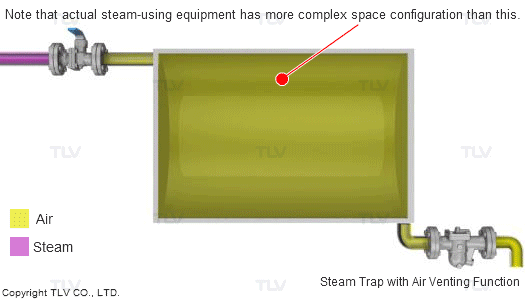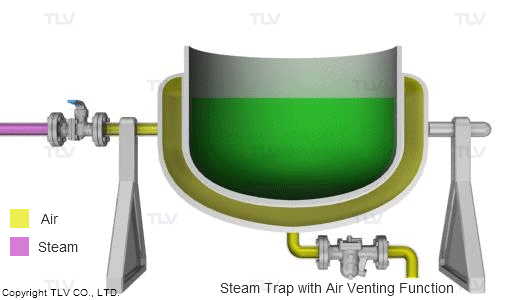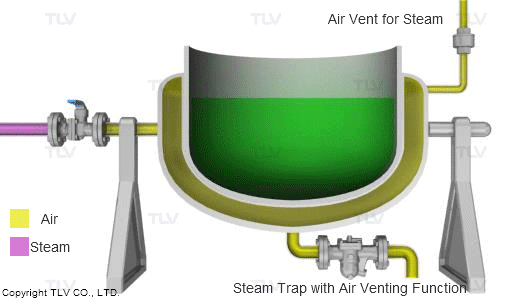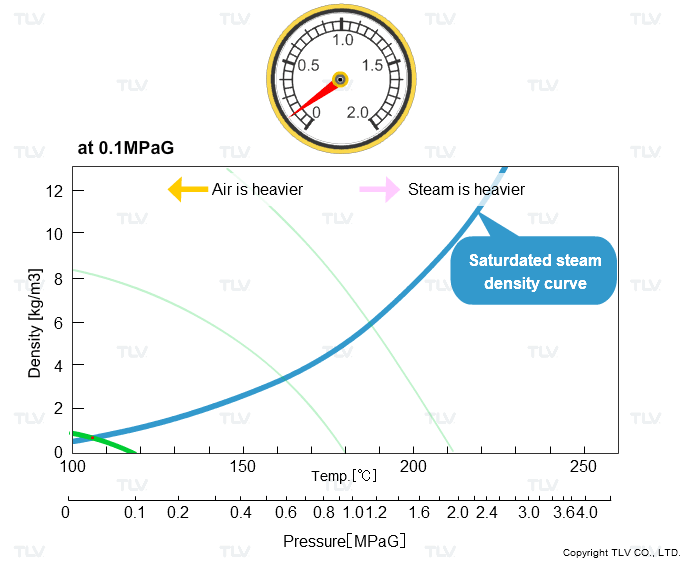- Home
- Steam Resources
- Steam Theory
- Removing Air from Steam Equipment
Basics of Steam
Removing Air from Steam Equipment
As seen in the article discussing Temperature Problems Caused by Air, removing air from steam equipment is essential to effectively use steam. The following article will first cover the relationship between the densities of air and steam, and then discuss how this affects the positioning of air vents in steam-using equipment.
Which is Heavier, Air or Steam?
- The average molecular weight of air is 29, which means that 1 mole weighs 29 grams.
- The molecular weight of steam (water) is 18, which means that 1 mole weighs 18 grams.
Therefore, under standard conditions* 1 mole of steam (water) is lighter than 1 mole of air. However, operational conditions do not limit themselves to standard conditions.
The densities of steam and air vary greatly according to the following factors:
- The steam:air ratio
- The pressure
- The temperature
* STP (Standard Temperature and Pressure): 1 atm, 0°C (273.15 K, 32 F)
| Effect of Pressure and Temperature on the Density of Air/Steam |
|---|
|
|
For example, as the above graph shows, air is heavier than steam at temperatures lower than 162°C (324 F), but lighter than steam at temperatures higher than that. However at 2.0 MPaG (290 psig), the relationship between the densities of steam and air changes at 188°C (370 F). The densities of steam and air clearly vary depending on the temperature and partial pressures of the mixture.
When configuring a system for proper air venting, it is important to realize that air vents cannot simply be installed on the top or bottom of equipment because of the varying densities of steam and air. Proper air venting can thus require more than one air vent depending on equipment configuration.
From Where Should Air Be Removed on Equipment?
In steam-using equipment, the air filling the steam space is pushed along by the flow of steam at start-up. Since heating begins when steam enters the equipment, it is critical that all the air be completely discharged at this time.
For a simple steam space configuration, such as the one illustrated in the animation below, a steam trap with an automatic air venting function is often suitable enough for air discharge.

However, particular care must be taken for equipment with complex steam space configurations or equipment that uses a siphon pipe because air has a tendency to build-up in these types of equipment even if a steam trap with an automatic air venting function is used.

In such cases, the use of a specially designed air vent for steam systems is recommended. Such an air vent should be installed in stagnant flow or collection areas where air is likely to be pushed.

Air vents for steam are a type of automatic valve with a configuration similar to that of thermostatic steam traps: the valve opens and closes in response to the difference in temperatures of the steam and the air.


